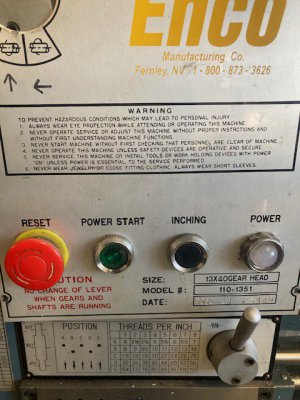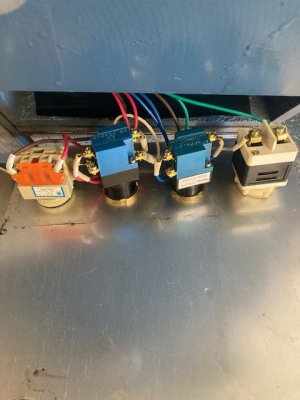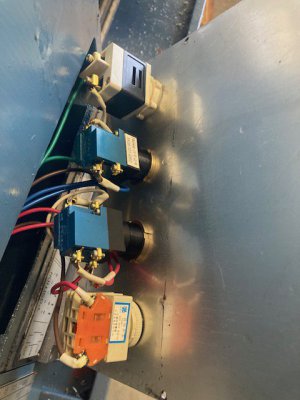I'm looking for a wiring diagram or picture of a properly wired control panel for an Enco 110-1351. I picked one up for my home shop, and the emergency stop button was broken and wired around. I replaced it and the burnt out power bulb. Everything functions as expected except the power bulb, which is on any time the lathe is plugged in regardless of the state of the e stop and power button.
I found a wiring diagram for a G4003 (which is the lathe I used previously) on manualslib. I can use that as a starting point and trace all the wires to verify it's correct if I need to, but I'd prefer to avoid that if possible.
I found a wiring diagram for a G4003 (which is the lathe I used previously) on manualslib. I can use that as a starting point and trace all the wires to verify it's correct if I need to, but I'd prefer to avoid that if possible.




